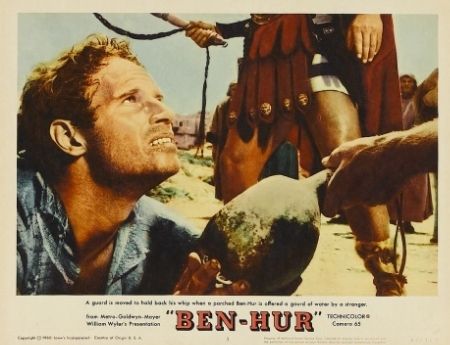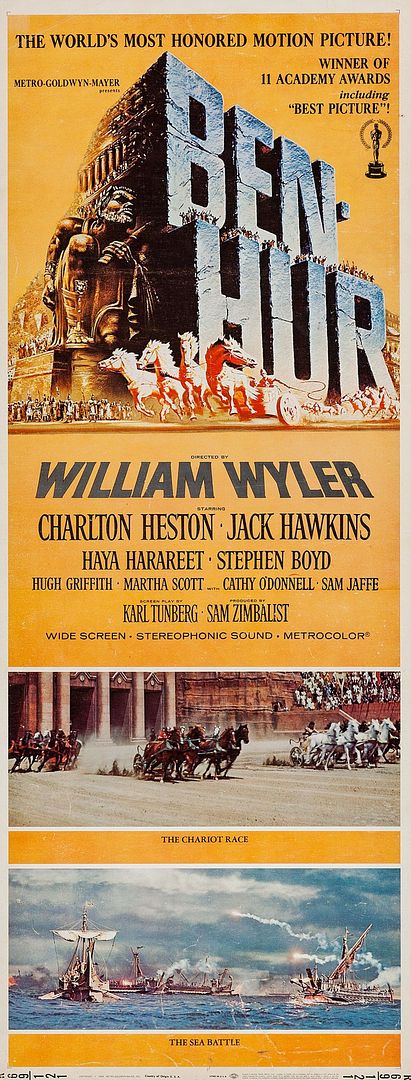Coming April 1 to the Pickwick Theatre!
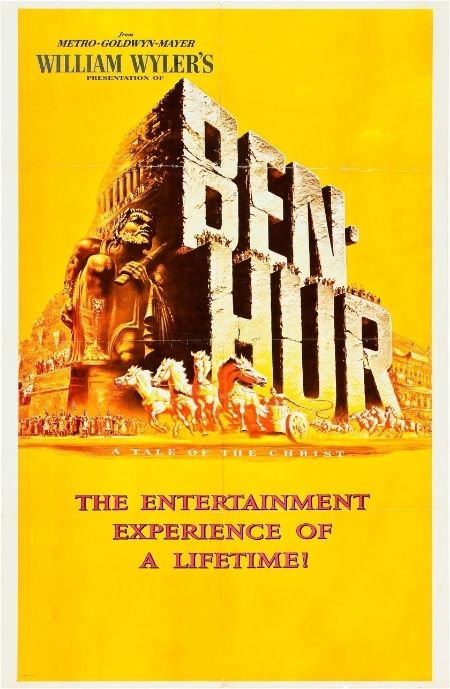
1. Big screen! We will be presenting this spectacular movie on the big screen– the way it was meant to be seen. Regardless of what size TV you may have hanging on your wall at home these days, nothing compares to experiencing it in an awe-inspiring theatre filled with hundreds of people.
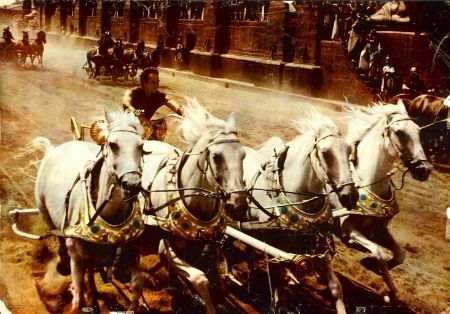
2. Charlton Heston. Heston is one of the great movie legends whose films ranged from Touch of Evil (1958) to Planet of the Apes (1968). But he is best known for the many epics he starred in. Heston was an almost mythic figure on the screen, so there was no one better suited for roles like Moses in The Ten Commandments (1956). Today’s historical concoctions (Pompeii, Son of God, et al.) often feature modern-looking actors who appear to have been pulled from the pages of GQ magazine. But Heston belonged to the pages of history.
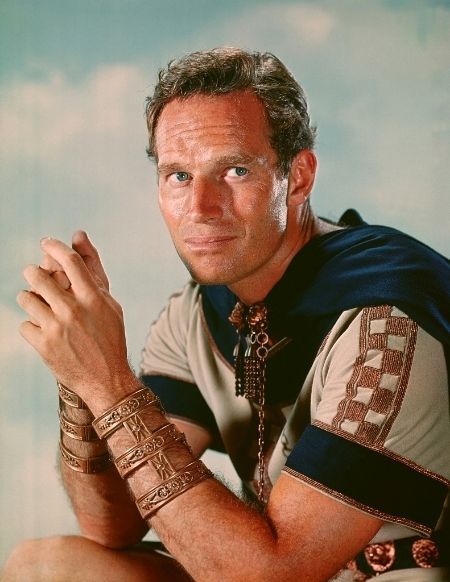
3. Chariot Race. Judah Ben-Hur’s horse race against his old friend, Messala (Stephen Boyd), remains one of the greatest actions sequences in film. It can be argued that it is the greatest sequence ever edited together. (Sorry, Battleship Potempkin.) Legendary stuntman Yakima Canutt and Andrew Marton directed this second-unit sequence in which Charlton Heston trained for weeks in order to properly drive a chariot.
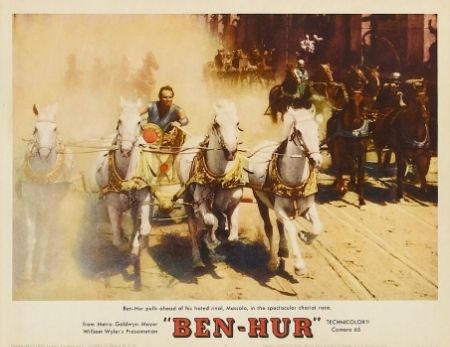
4. Music. The score by Miklos Rozsa is considered his finest composition and won him an Academy Award. Anyone who has seen the movie before or owns an album or cd of this amazing score can appreciate its grandeur and sweep.
5. Sets. Everything about Ben-Hur looks epic. It was the most expensive movie made up until that time, costing MGM $15 million dollars. The most famous set is the Circus Maximus arena in which the chariots race. It is astounding what Hollywood craftsmanship could build and accomplish (aided by some brilliant matte paintings). Today’s epics, by contrast, rely heavily on CG effects where most of the action is in a computer. But nothing can replace the realism of actual recreations. Sets and location work add to the actor’s performance, creating an element he or she would not feel if acting in front of a green screen.
6. William Wyler. Wyler was at the helm of some of the finest productions to come out of Hollywood including Wuthering Heights (1939) and The Best Years of Our Lives (1946). Wyler wanted to out-DeMille DeMille and succeeded in making an intimate epic that didn’t allow the scale to dwarf the characters.
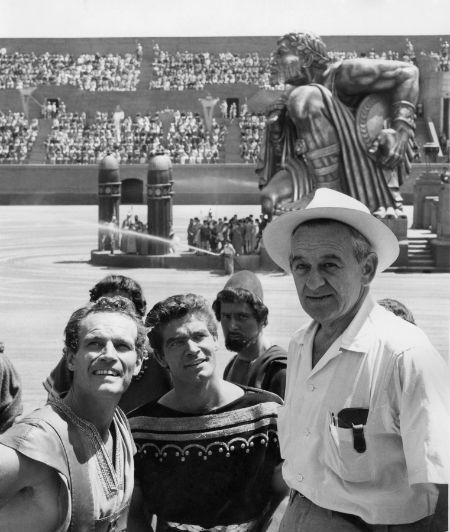
7. Best Picture. Ben-Hur won 11 Academy Awards including the Oscar for Best Picture. It’s been noted that Ben-Hur ushered in a modern-style of filmmaking, breaking away from conventions associated with the studio system. Ben-Hur‘s visual compositions and lighting (photographed by Robert L. Surtees in the new “MGM Camera 65” process)– as well as its editing– set it apart from most of what 1950s Hollywood was releasing at that time.
8. Great epic. There were many epics made in the 1950s and 1960s, many of which dealt with religious or Biblical storylines. Though the main plot follows the relationship of a Jew and a Roman, the film is also A Tale of the Christ. The story of Jesus is dramatically and reverently interwoven with the life of the (historically) fictitious Ben-Hur. The film not only deals with the tension between Romans and Jews but also covers the last days of Christ. Like other epics, it is filled with majesty and spectacle, but it is a testament to the filmmakers that such a large-scale production could be made with such intimate detail and nuance.
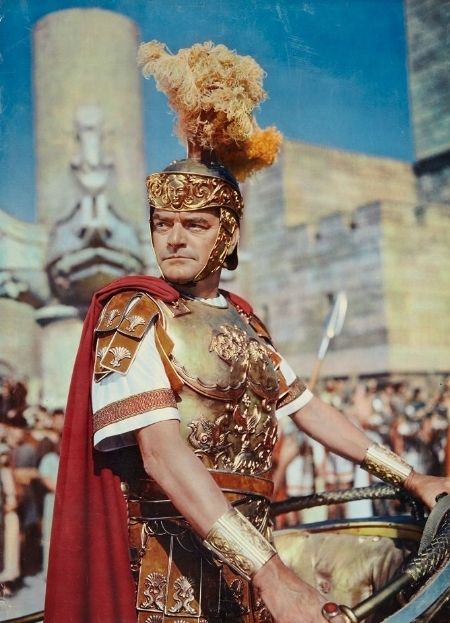
9. Comparison to 2016 remake. Next year will see the release of another Hollywood remake of a classic film. Afterall, the chariot race would be so much better if it were computer-generated, right? (Why doesn’t Hollywood remake the failures like The Silver Chalice instead?) We can’t call the new Ben-Hur lackluster until it comes out, but we doubt it will measure up to the 1925 version much less the ’59 one.
10. Transcendent viewing experience. One of the most rewarding theatre experiences I’ve had in recent years was seeing a 35mm presentation of The Ten Commandments (1956) at the Portage Theatre (sponsored by the Northwest Chicago Film Society). Though our presentation is a DCP (digital) restoration, the image will look beautiful. Not every movie we see in a theatre is an “event” movie, but Ben-Hur is surely one of them. Once in a blue moon it will be screened in a theatre, and when it does we should take advantage of the opportunity. Ben-Hur is a work of great power that has influenced filmmakers and inspired audiences for 50+ years. It is a special experience one will not soon forget.
